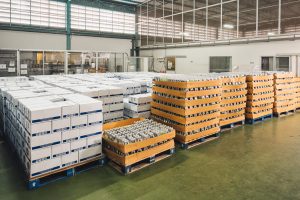System verification is an important component of SQF. Third-party audit stats for SQF often show that this element is non-compliant.
Verification confirms that the Food Safety Management System is functioning as planned. The purpose of verification is to demonstrate that the food safety plan is science-based and that CCP is effective at controlling the significant hazards associated with the product or the process. It also ensures that procedures are being followed during operations. System verification covers many Pre-Requisite Programs (PRPs) such as equipment calibration, environmental monitoring and food sampling and testing. Verification activities also include internal audits, site inspections, record reviews and food safety plan reanalysis.
What is Process Validation?
Validation is part of system verification and is associated with the process. It confirms the plant’s ability to successfully control food safety hazards when implementing scientific principles. In lay terms, it answers the question, “Is our HACCP plan working?” Validation also demonstrates process reliability and variability and provides the basis for monitoring frequency (for example, a stable process may require fewer checks). A validation study is a mandatory requirement of Codex HACCP1, of FDA preventive controls for human food and of SQF and other GFSI-benchmarked certification schemes. It involves collecting process data to verify that critical limits and other food safety targets are achieved consistently. Food safety limits may be obtained from the scientific literature or from regulatory guidelines and standards. If such references are not available due to the novelty or specificity of the product or process, a food safety study may be conducted to determine appropriate critical limits. In the case of a process study to rule out pathogen risks, temperature data would be collected and lethality calculators2 may be used to confirm bacterial log reductions. In the case of a foreign material exclusion process (for example, metal detection or x-ray), the study would challenge the equipment at its detection limits. In some other instances, lab analysts may inoculate a food product with a known bacterial load and confirm safety by testing the food thereby demonstrating the adequacy of a kill step.
A validation study must be documented and must show that the equipment can reliably deliver the process controls as designed. Initial food safety plan validation should be completed before the implementation of the plan. Controls should be re-validated if there are changes to the process or product, if new equipment is commissioned or when process failures are reported. An example of a validation study for cooked eggs can be found in the FSPCA manual3 (See Appendix 3 page 14 ).
Routine Verification
Other aspects of system verification are routine activities captured in standard operating procedures. In simpler terms, verification shows whether procedures are followed. SOPs detail verification frequency, procedure, corrective action and record keeping. For instance, a flour sifter operation can be verified weekly by performing a record review or a documented inspection. The adequacy of routine calibration for temperature probes can be reviewed daily by signing off on temperature monitoring records.
The frequency of verification also varies with process variability, human factors (high employee turnover necessitating increased supervision) and customer expectations. In addition, some verification activities are generally undertaken yearly such as internal audits, or weekly, monthly or quarterly such as with finished product testing or environmental monitoring. The reanalysis of the food safety plan itself is generally done annually. When changes are made to the product or process which may impact safety outcomes, the plan is reanalysed at the time of change.
In some cases, regulatory inspections provide the facility with the necessary verification activity. When such activity takes place, a food inspector performs an in-depth process audit to ensure that controls are properly implemented and corrective actions are taken. A record review of CCP logs would, for instance, show that observations or measurements fall within critical limits and that a food product is therefore safe. Alternatively, such review may uncover a process or CCP failure, in which case corrective actions would need to be undertaken and potentially unsafe products placed on hold.
Verification and validation are critical for food safety and must be performed by knowledgeable and trained individuals. Some regulatory standards for food safety prescribe the frequency for verification as well as the type of credentials required. For example, PCQIs (See definition under “Preventive Controls, General”) may validate process controls for FSMA, as well as sign off on verifications. The verification of monitoring under FSMA is required within 7 business days. Plan reanalysis is required every 3 years unless the process or product changes.
System Verification for SQF Food Manufacturing
- The Safe Quality Code for Manufacturing (Edition 9)4 lists the certification requirements for SQF System Verification in section 2.5: 2.5.1 Validation and Effectiveness (Mandatory) 2.5.1.1 The methods, responsibility, and criteria for ensuring the effectiveness of all applicable elements of the SQF Program shall be documented and implemented. The methods applied shall validate that:
- Good Manufacturing Practices are confirmed to ensure they achieve the required results;
- Critical food safety limits are reviewed annually and re-validated or justified by regulatory standards when changes occur; and
iii. Changes to the processes or procedures are assessed to ensure the controls are still effective. Records of all validation activities shall be maintained.
2.5.2 Verification Activities (Mandatory)
2.5.2.1 The methods, responsibility, and criteria for verifying the monitoring of Good Manufacturing Practices, critical control points, and other food safety controls, and the legality of certified products shall be documented and implemented. The methods applied shall ensure that personnel with responsibility for verifying monitoring activities authorize each verified record.
2.5.2.2 A verification schedule outlining the verification activities, their frequency of completion, and the person responsible for each activity shall be prepared and implemented. Records of verification of activities shall be maintained.
The SQF requirements distinguish between the validation of processes (2.5.1) and routine verification activities (2.5.2). In 2.5.1, the emphasis is on food safety criteria, procedural methods and responsibilities. The scope includes the entire system, both food safety plan controls and the pre-requisite programs. The SQF practitioners must provide evidence, through observations or scientific measurements, that food safety is achieved and that programs are effective. We discussed earlier validation study requirements for CCPs and critical limits, what about PRPs? When reviewing the pest control program, what criteria would denote program effectiveness? Possible answers: no evidence of pest activity, low or no rodent catches, no pest sighting, adequate number of rodent traps, all rodent traps checked weekly, no missing traps etc…
Bullet point 2.5.2 addresses the frequency of verification activities and legal requirements. A verification schedule must be maintained and covers GMPs, CCPs, other controls such as Preventive Controls, PRPs and regulatory specifications (such as product pH, water activity, product temperature, net weight and quality grades to name a few). When verifying the sanitation and cleaning program, the trained reviewer would focus on the implementation of the SSOPs and recordkeeping. The following gaps may be identified: missing tasks, procedure errors, incomplete records or lack of training.
For additional examples of verification activities, consult this SQFI tip sheet5 : Tip Sheet 16
References
2-Kill Step Validation for Baking (AIB)
4-SQF Food Manufacturing – Edition 9
5-SQF Tip Sheet 16
Ready to become SQF certified to Edition 9? Sirocco offers consulting and training services as well as template solutions to facilitate food safety compliance. Check our e-store for more information.





